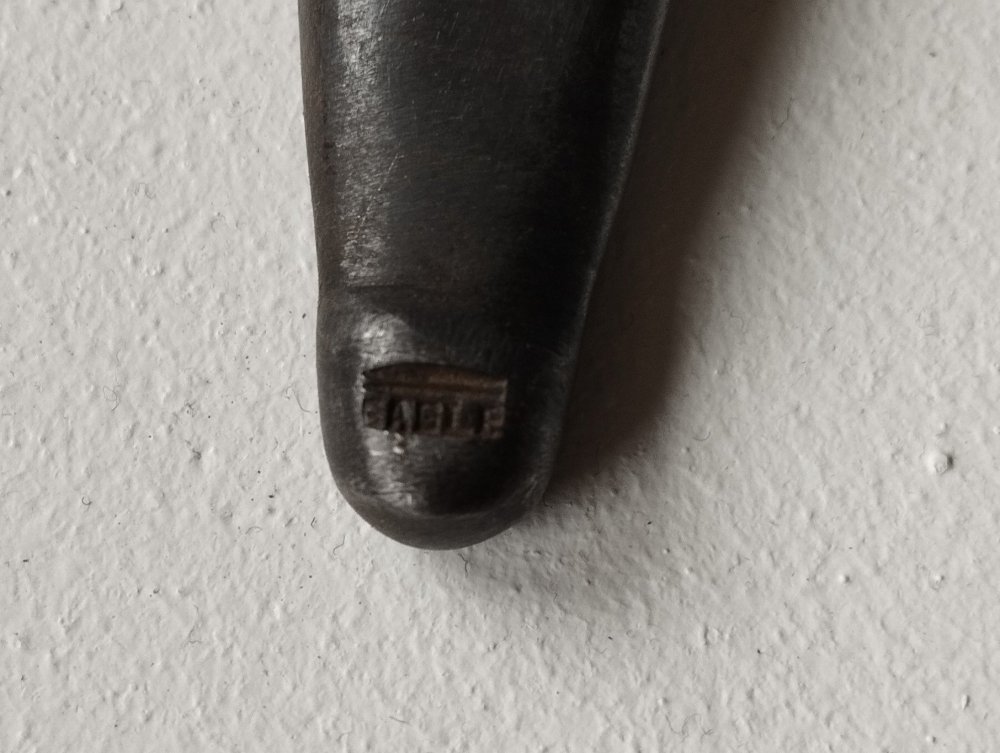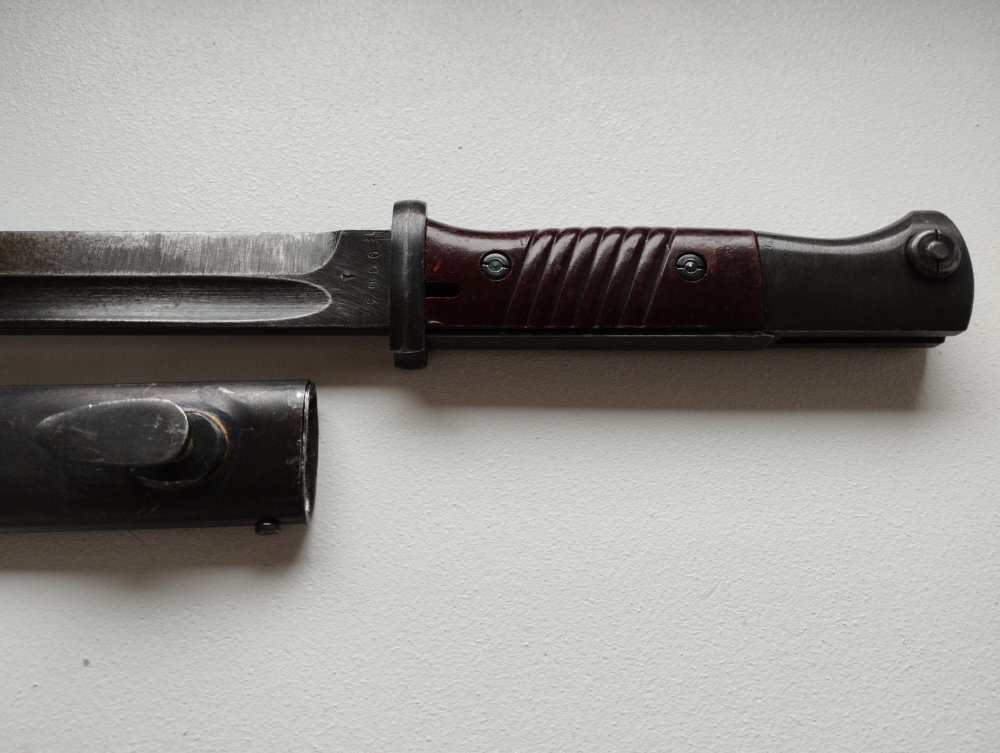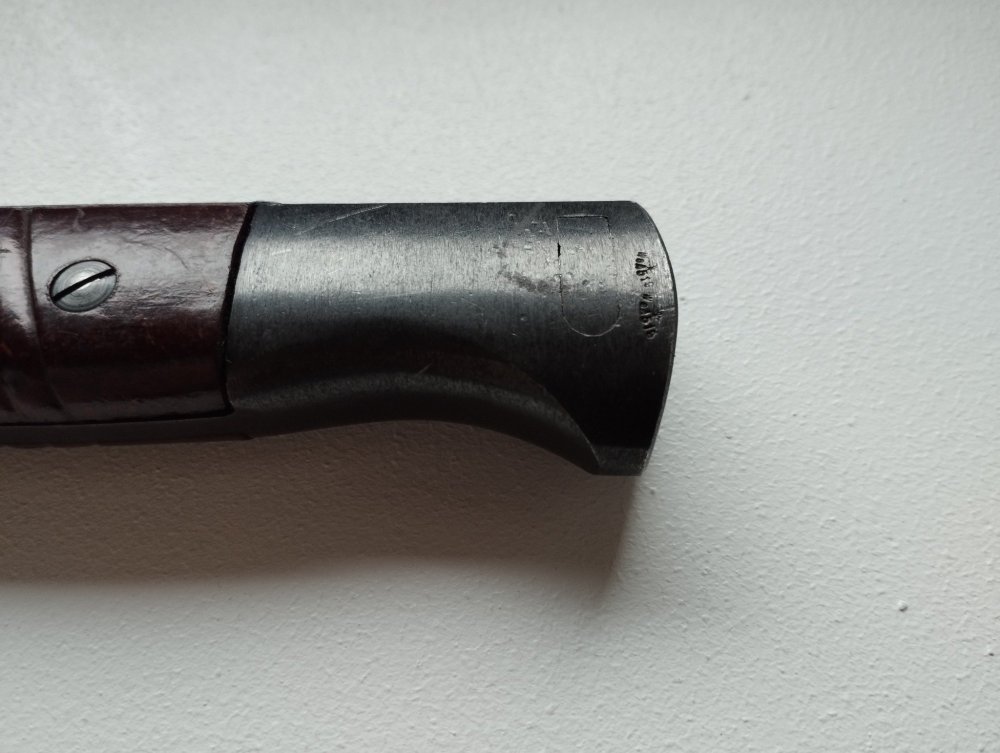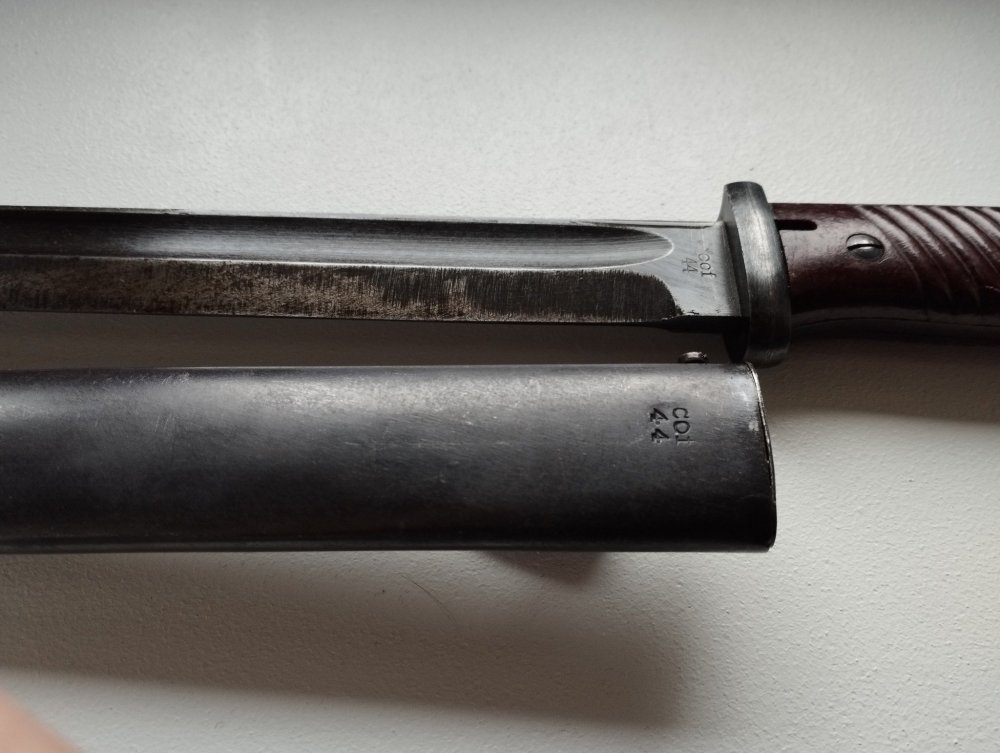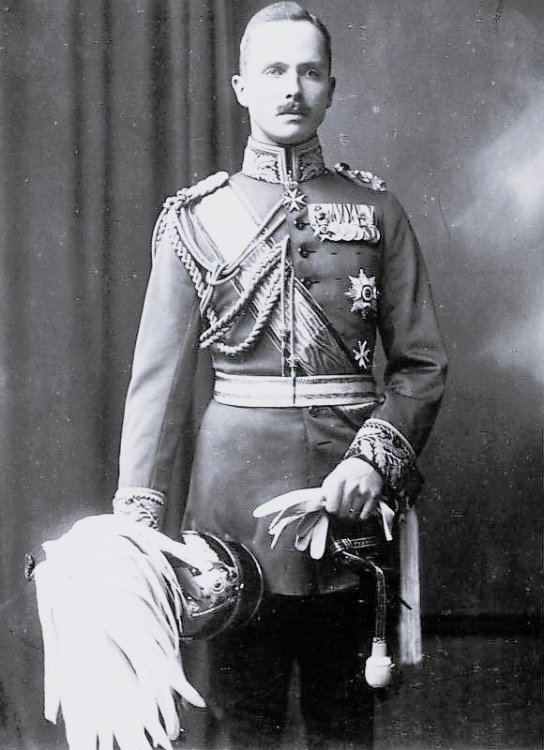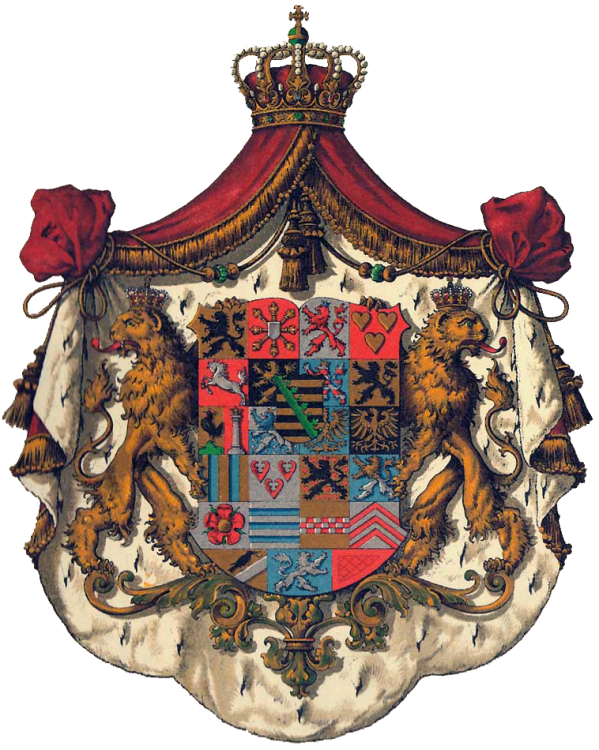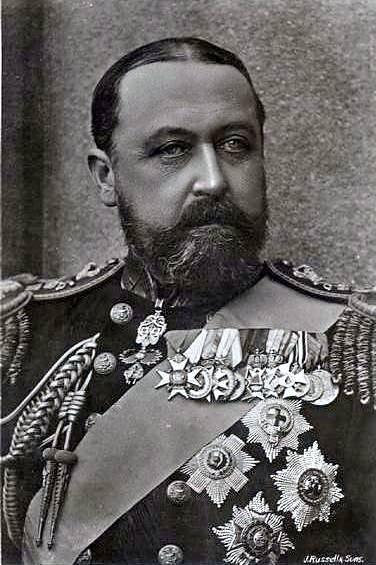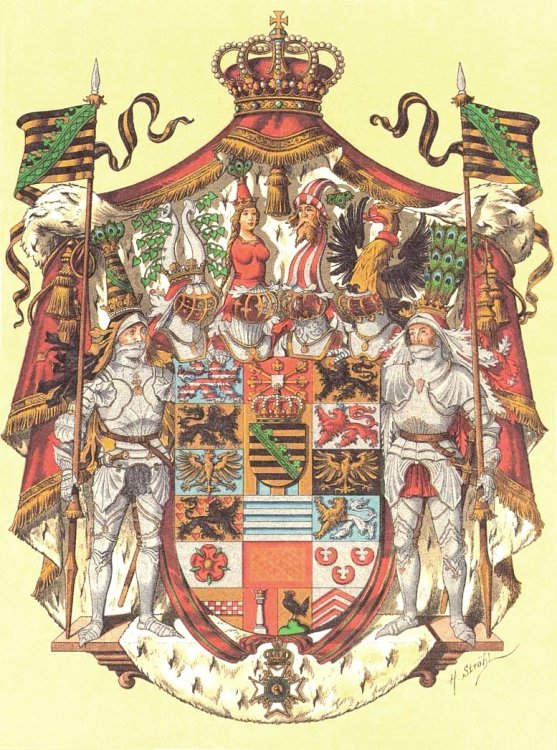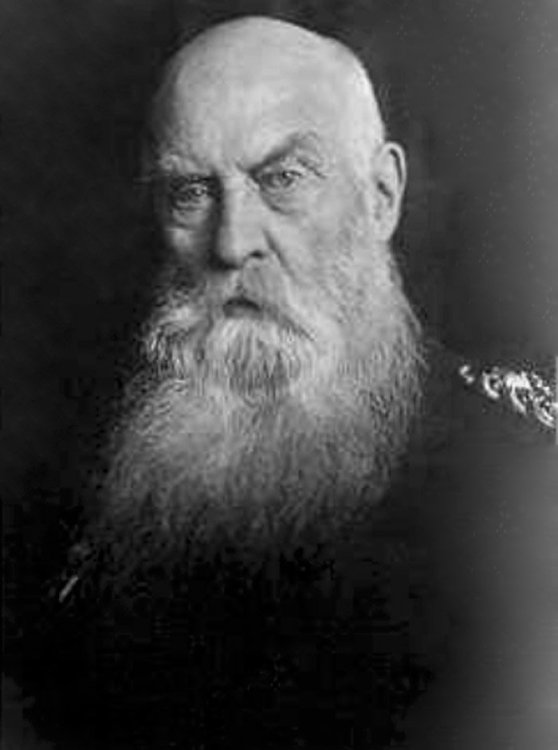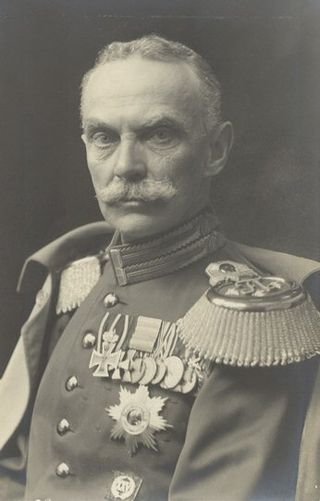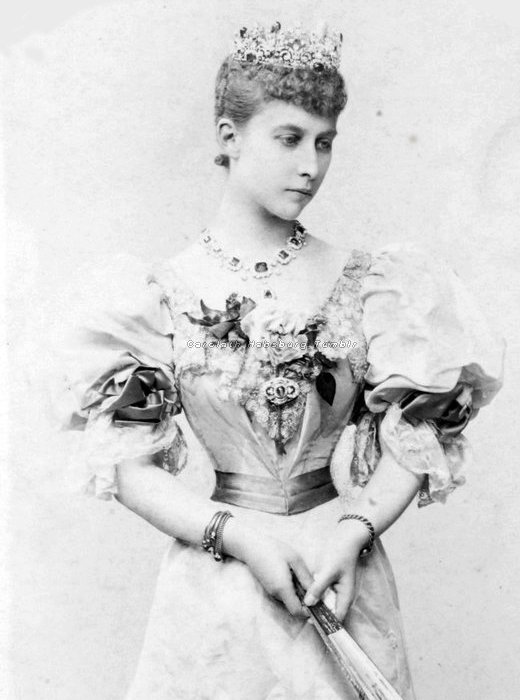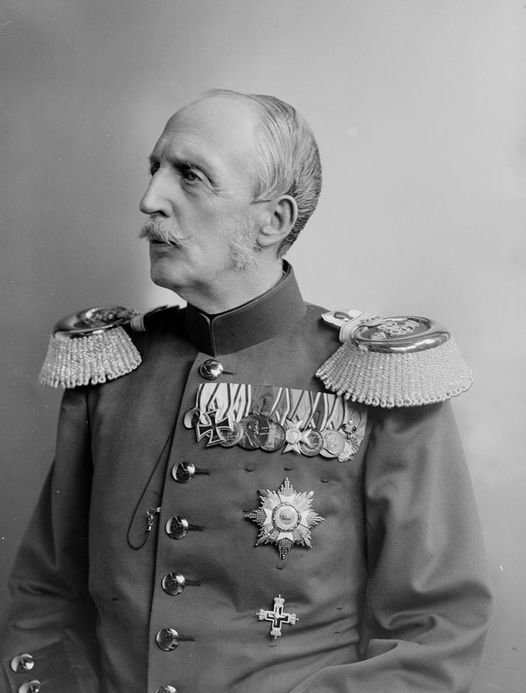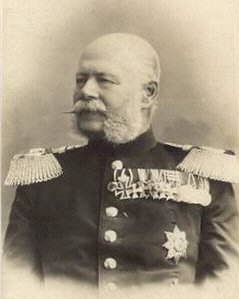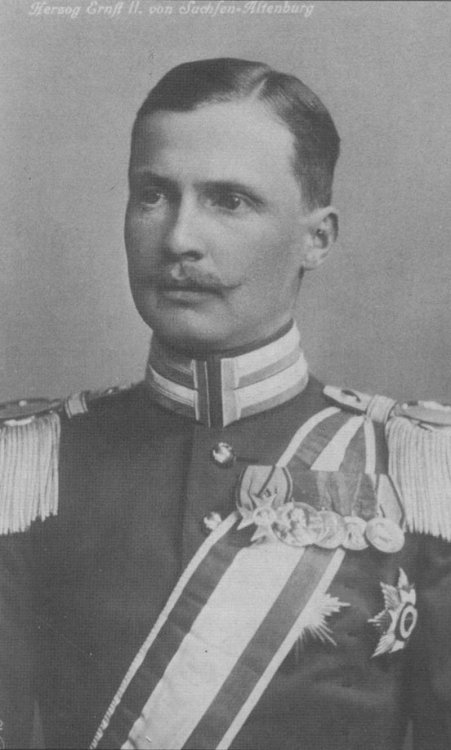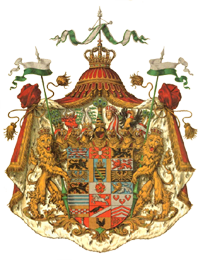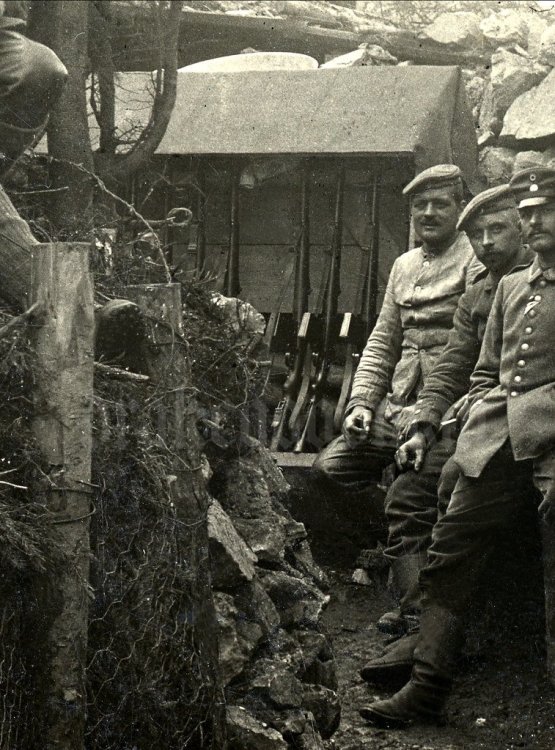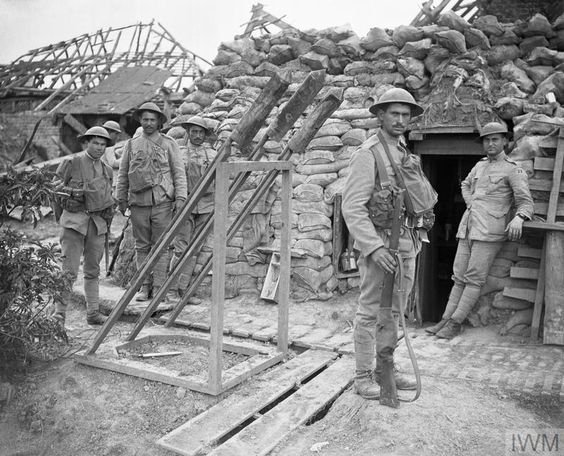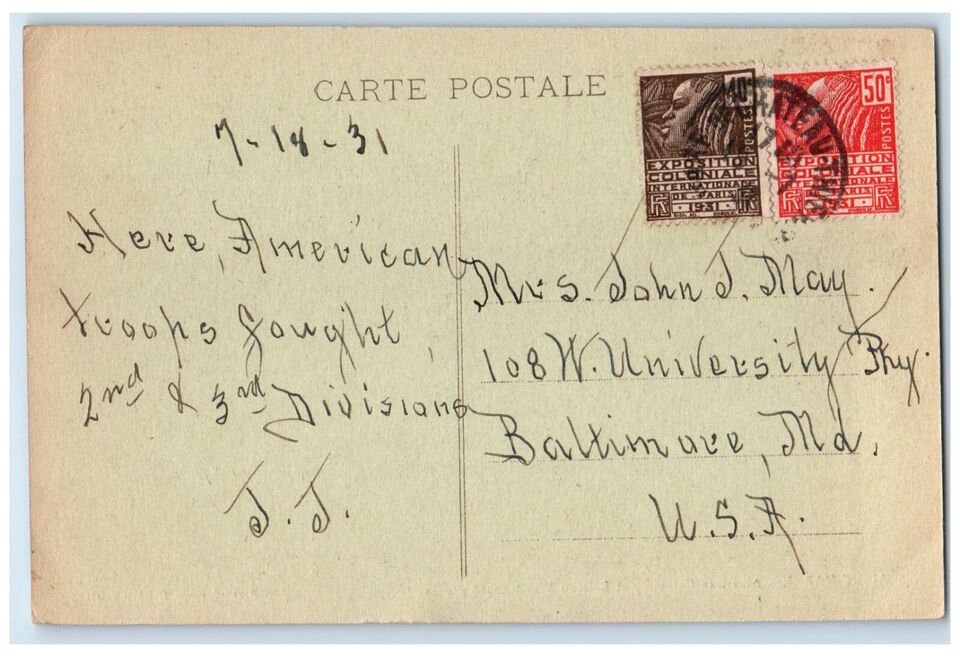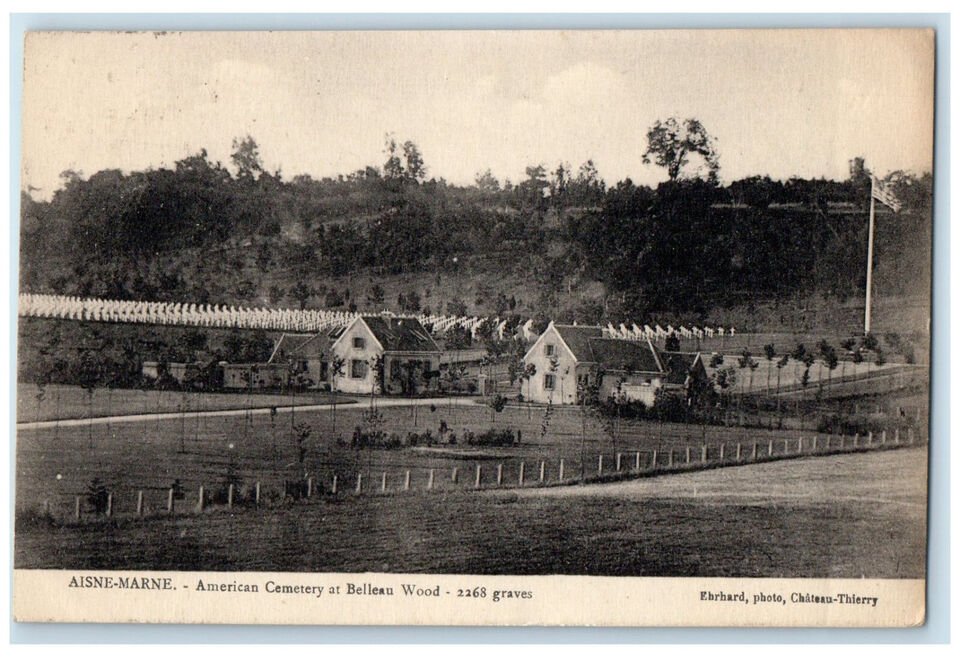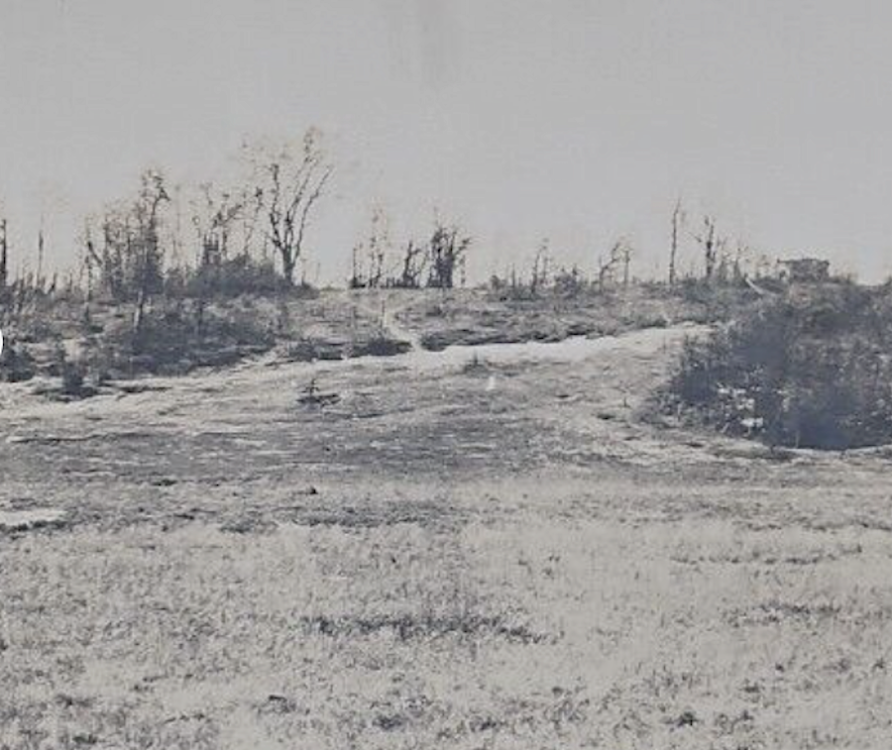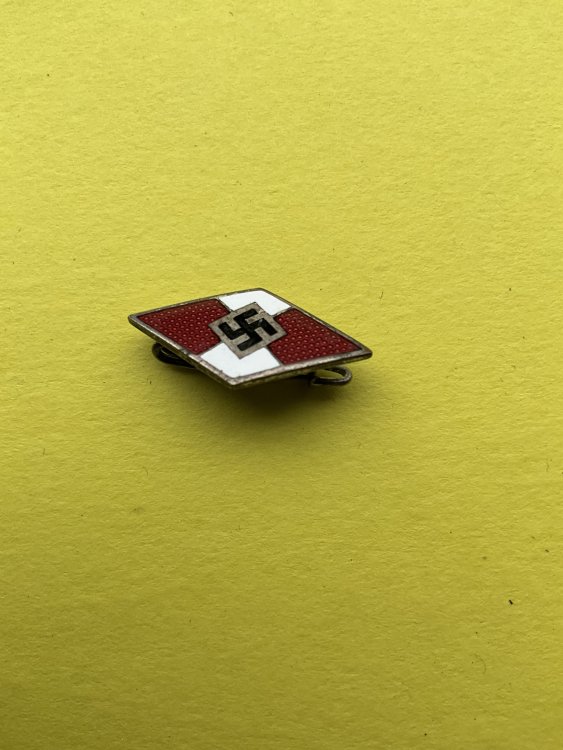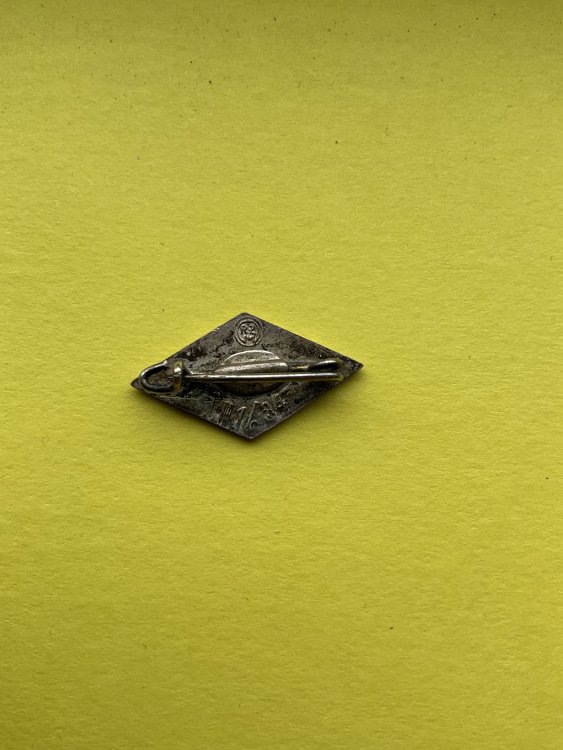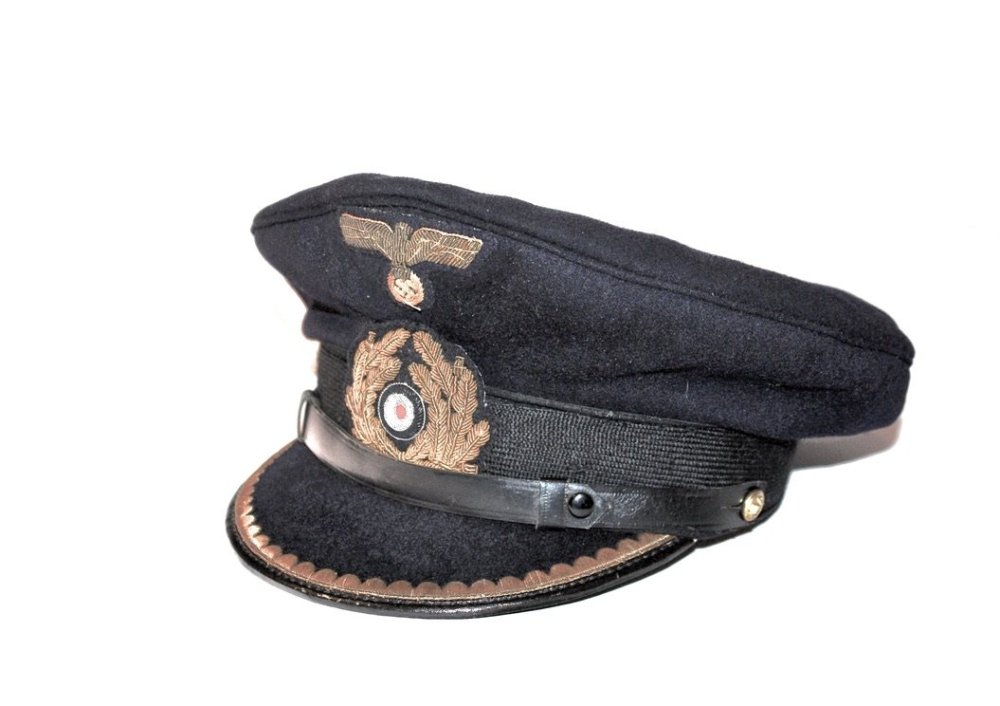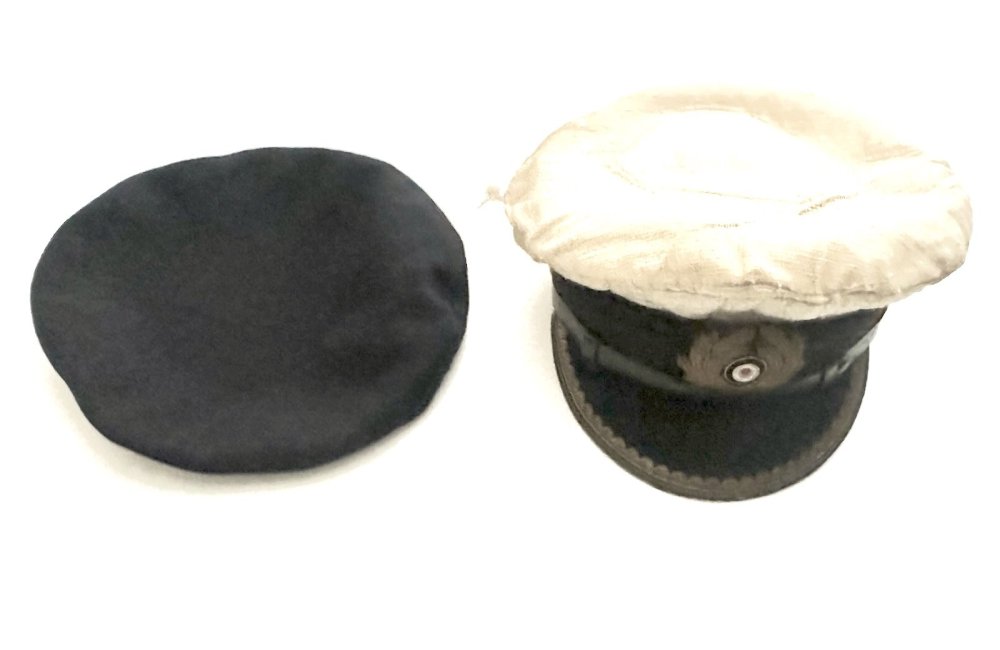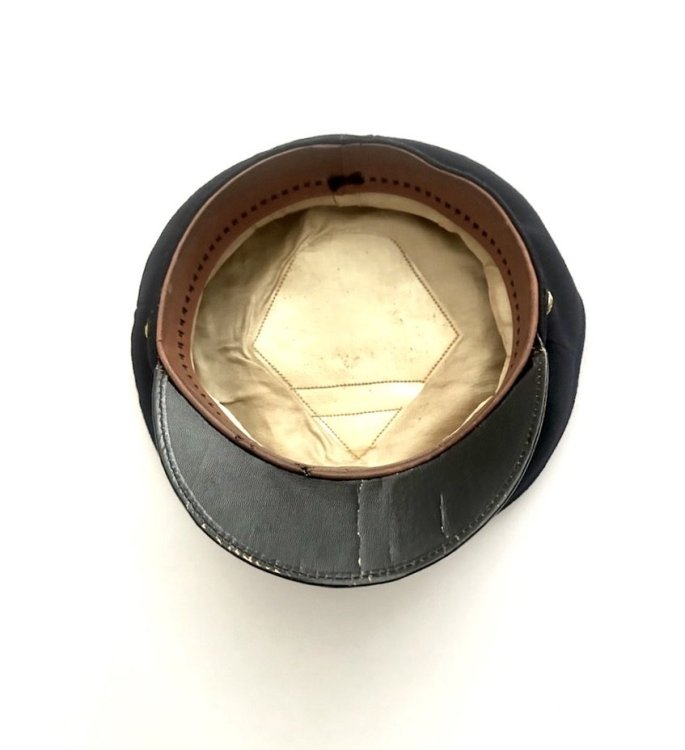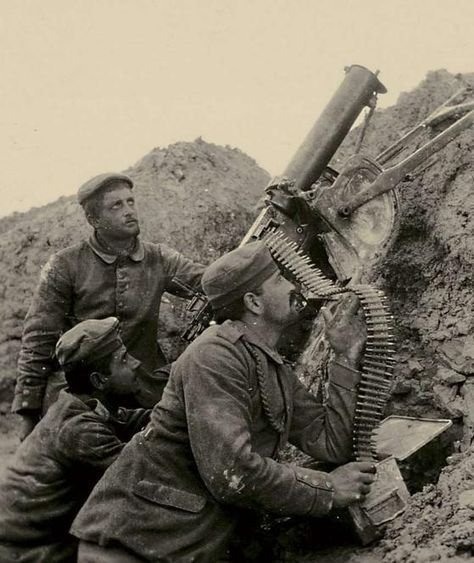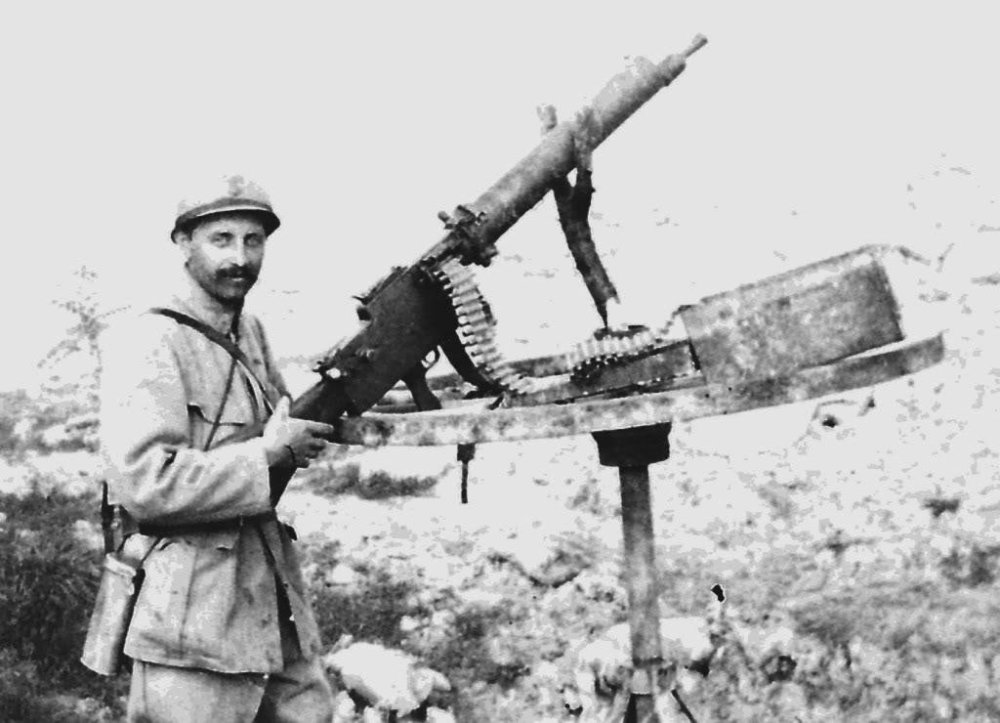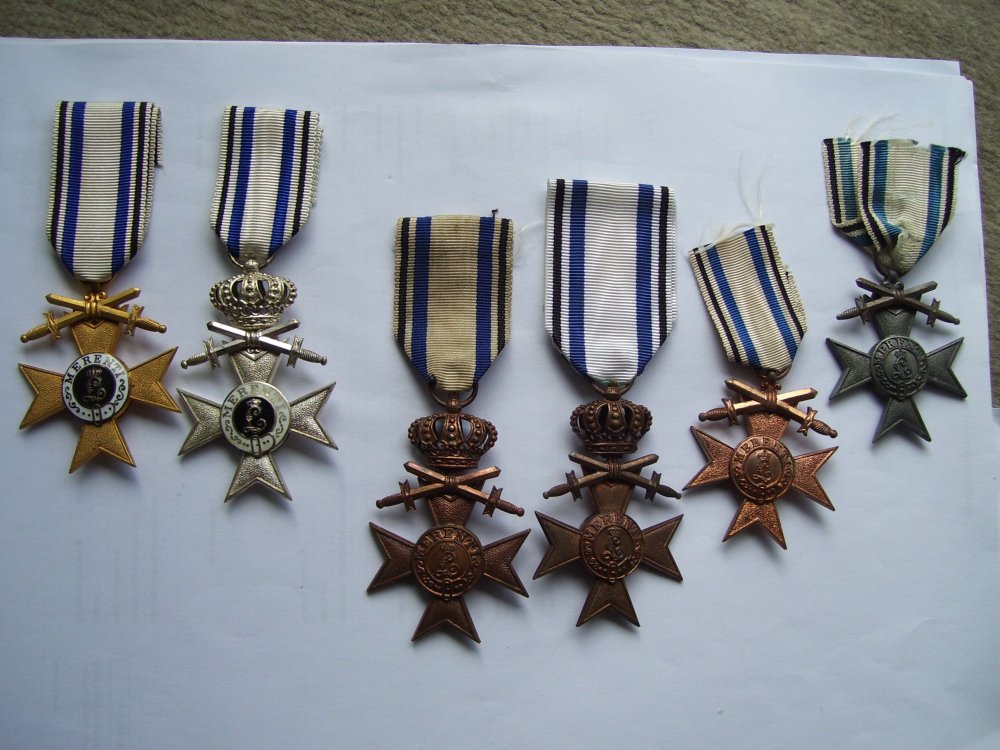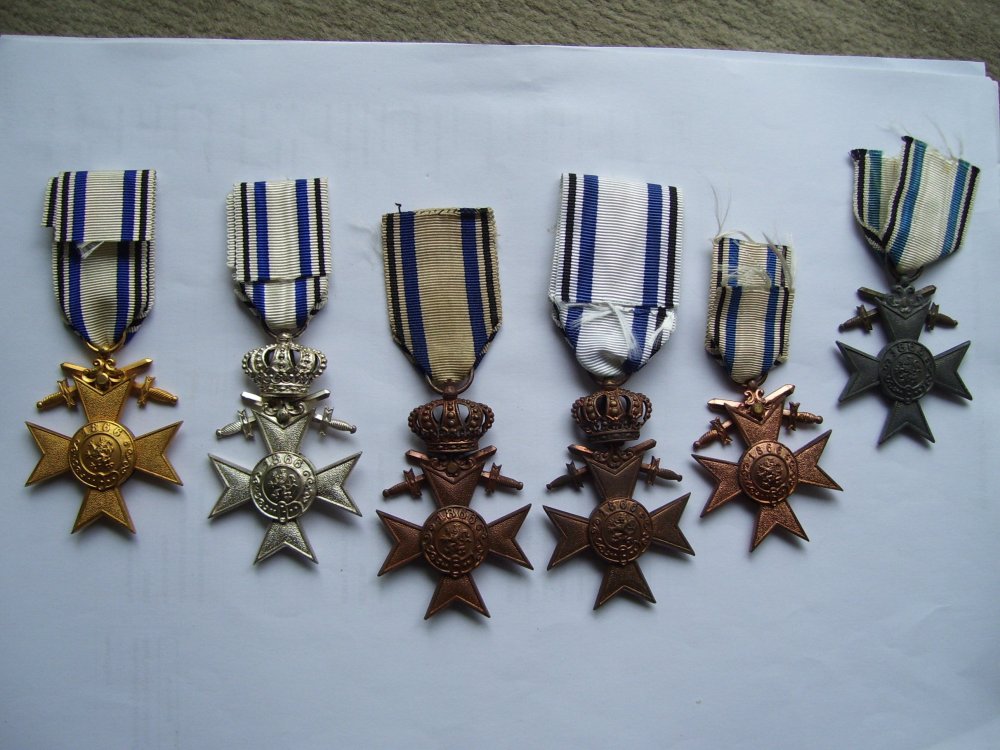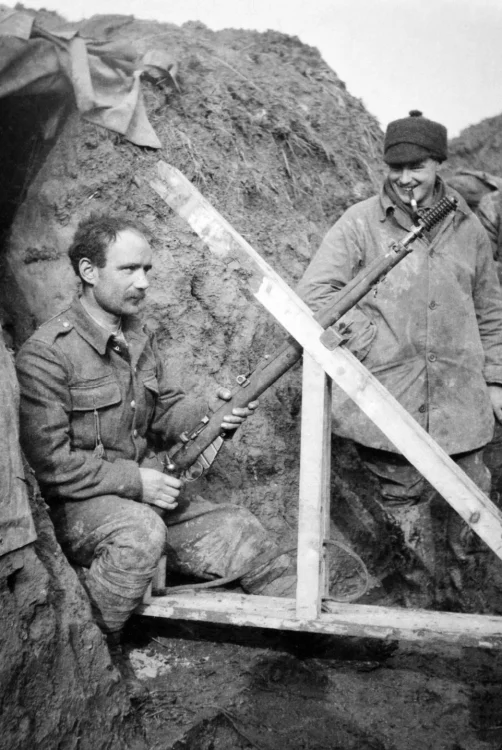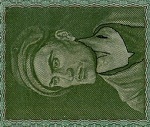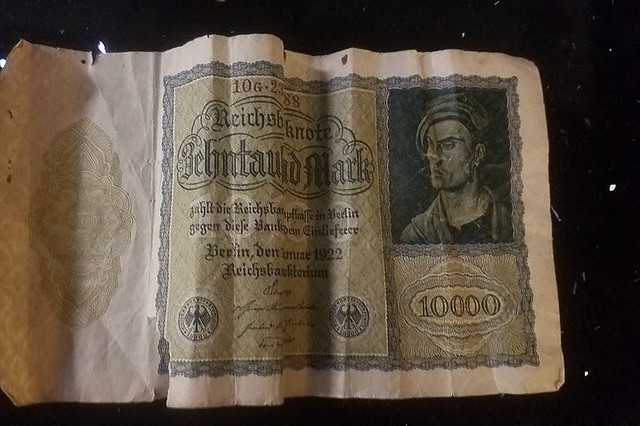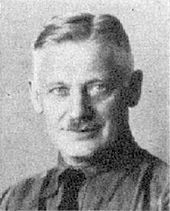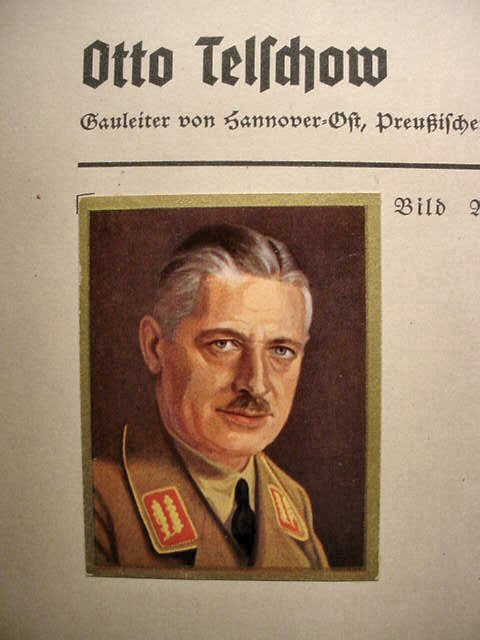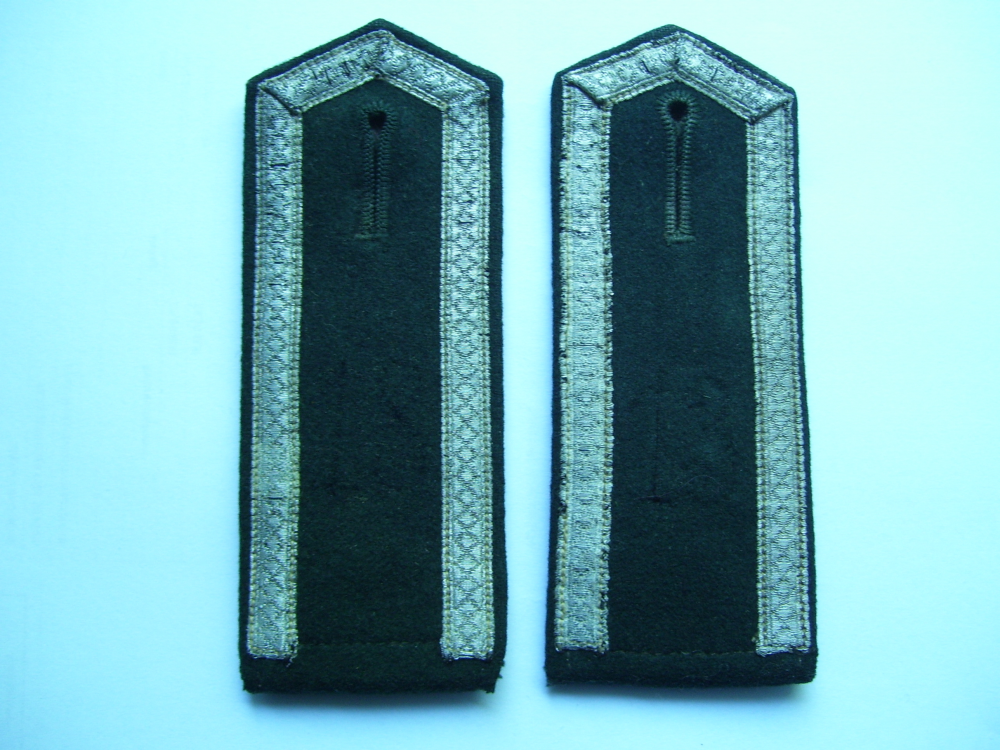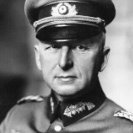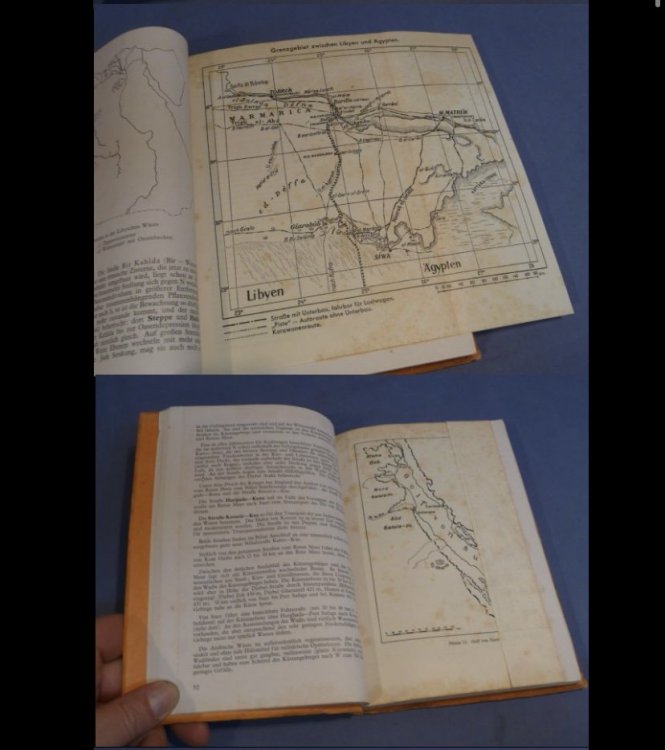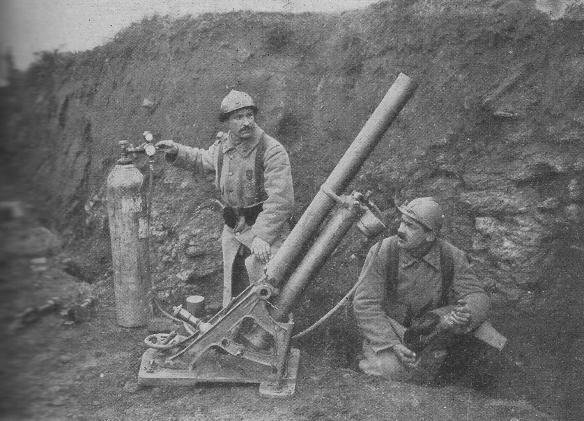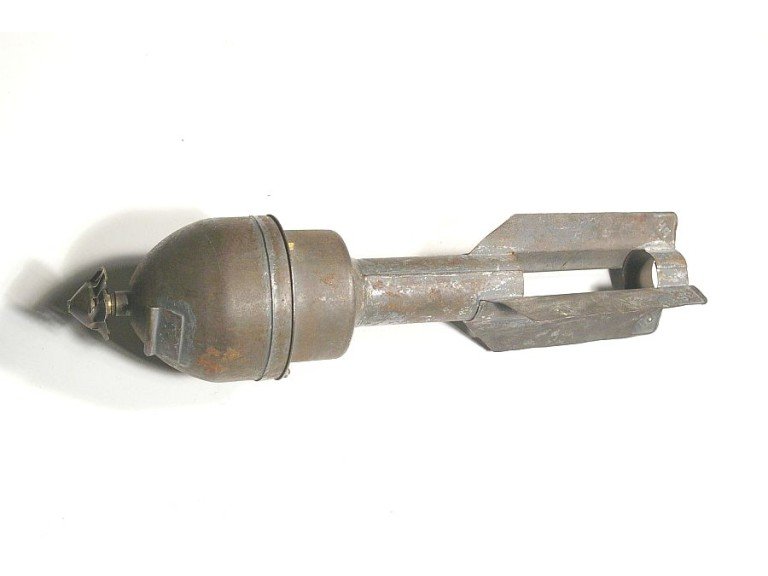Leaderboard
Popular Content
Showing content with the highest reputation on 21/03/24 in all areas
-
A collector enquired on a forum about the markings on the scabbard tip of K.98 bayonets, something that had not come to my attention before. On my two examples, there is nothing much to note, the one clc 43 has an illegible marking to the rear of the ball tip, which has some corrosion and light pitting rendering almost completely illegible, I had previously understood this to be a WaA mark. On my other early, almost mint example S/155G, there is simply a rounded indentation to the rear of the tip. The bayonet scabbard in question looks as though it has been post-war re-worked and the tip almost completely ground down and re-blued, the rear bearing a mark, which looks like "GAELE" or "EAGLE", which is puzzling. Has anyone come across marks like these before?2 points
-
2 points
-
2 points
-
2 points
-
Very odd marking. Unknown? The modification to the tip of the scabbard reminds me of some of the Turk bayonets. The source I use with markings and photo is the K98k Bayonet Registry and Photos http://k98.free.fr another group of web references: https://www.k98kforum.com/threads/german-bayonet-manufacturers-and-their-codes.4819/ https://worldbayonets.com/Bayonet_Identification_Guide/Germany__Post_WW_I_/Germany_1933_1945.html https://worldbayonets.com/Misc__Pages/SG__84_98_III_Makers_Chart/SG_8498III_Bayonet_Makers_Table.pdf2 points
-
Recently got this 1916 dated MK. VII British Ammunition Crate, this particular one made it to the US as it has 2 labels addressed to Rock Island Arsenal. I replaced the 2 carry straps as the originals were pretty much gone. The retaining pin needs a new twine rope as well, but I got it really cheap, so could not pass it up. Several of the original labels are still present and visible, and the crate itself has a stamp in the wood from 1916.1 point
-
Remind of the ammunition boxes in the film "Zulu", the lid attached with screws and the lead foil below.1 point
-
1 point
-
1 point
-
A 7/ 18/ 1931 dated post card showing the new finished entry road and the vistor building and the staff care taker building . A nice view of the woods with a lack of trees from the battle even in 1930. The lower photo portion shows the open path at the end of the battle. Where the flag is standing in the above photo. This is a central portion of a 1918 yard long. This at the base of the wooded hill of Belleau Woods. It shows the Hunting Lodge tower on the top. Photo is before the cemetery is located here. Title: As seen on the original yard long photo: "A close up view of the Belleau Woods showing the hard fought ground captured by the American Army in 1918" Fred Schutz Photograph(Washington, D.C.) Date Created/Published: 1918.1 point
-
Badge 3 BM M1/122 is a known fake, badge 2 looks almost the exact same, so I would say this one was bad too unfortunately.1 point
-
1 point
-
Yes, he is wearing the fieldgrey wartime uniform instead of the brown pre-war party uniform.1 point
-
Picture is a two-piece officer''s visor cover for junior grade from my collection of Kriegsmarine antiques. The cap has a hand-embroidered gilt wire national emblem and, cockade, as well as gold wire piping. This cap belonged to Werner Wendt (1916-1988), Captain of U-765. The U-765 was sunk in the North Atlantic on 6 May 1944 by depth charges on its first war parol. Werner and 10 crewmen survived, 37 dead. Pictured below is the underside view of the visor cap. Pictured below is the two-piece visor cover disassembled. In this configuration, a white or blue cap-covers could be worn. Because I do not like to take this cover apart, I used a photo taken years ago.1 point
-
1 point
-
1 point
-
1 point
-
1 point
-
1 point
-
1 point
-
Yeah kenny.. I left it. Thank you.. And thanks all who helped with this one.1 point
-
Lee I would leave it, the stamp on the Wehrpass is the exact same as the stamp on the cigarette wrapping I posted, why would cigarette wrapping be unit marked?1 point
-
All pages after the stamp.. Are just blank with no writing or entrys. SS items /stamps I guess are highly faked because more sort after and rare. I'm not sure it's worth buying. Wanted to check with you guys to see because I'm new to collecting.. Only been doing it for 2 years1 point
-
I have edited and added further information on my posts above.1 point
-
Of course it's real. The candidate here was considered as a "Volksdeutscher", who was not considered suitable for the Wehrmacht, but the SS took all. The SS had the same Wehrpaß as all others, first of all was the Musterung by the Wehrerfassungsamt, after which he was graded as to health and age, and then posted to an appropriate unit, whether SS, Heer, Luftwaffe or Kriegsmarine. The local Kreiswehrersatzamt was responsible for the Musterung/Erfassung of the candidate, after which was decided for which unit he was suitable for. After 1942-43 the SS had the first choice and even took on unfit candidates, who then were typically selected for unsavoury tasks such as the concentration camp Wachmannschaften.1 point
-
Still does not seem to make sense, he joined the German army in 1942 so why would it say in active service Polish army for 27 days? I suppose it's possible but not sure why it's mentioned as the Polish army would be the enemy, also is he meant to be a worker or a guard? It's all very confusing.1 point
-
1 point
-
1 point
-
1 point
-
1 point
-
Hindenburg's helmet from the war of 1866, kept at Schloß Neudeck, photo from the 1920s. Schloß Neudeck was completely obliterated after 1945, only traces of the foundations remain and the place is overgrown by a wood. The whereabouts of this helmet is unknown, or whether it still exists, if so, possibly somewhere in Russia.1 point
-
1 point
-
1 point
-
I would say 30-50 pounds, maybe more, North Africa specialists would probably pay more.1 point
-
What to watch out for - 1918 and 1919 pennies, esp. if to the left of the date there is a H or a KN, these can be very valuable, as there was only a limited mintage.1 point
-
Never got a chance to photo it Fritz and now it is sadly sold, was picked up by a Canadian solder who got it from some one at the Falaise Gap. Wish I still had it, it was in lovely condition apart from a big burn hole to the top of the cap which is why I sold it. The hole was probably caused by burning coming though the open hatch.1 point
-
1 point
-
1 point
-
I think everyone feels the same way, but unfortunately we are stuck with it, prices have really risen from the first day on. Everyone with any savings had only the half from the first day on. The Euro was thought to be a bridge over borders, but nobody is travelling now!1 point
-
Luftwaffen Helfer (above) often to Flak assistants, worn on a special uniform of bluegrey LW cloth below: Luftwaffen-Helferinnen, arm patch, worn by female Nachrichtenhelferinnen and Stabshelferinnen Armband worn by female Flak crews A sidecap like this, but with light blue piping was worn by the Flieger-HJ1 point
-
Strange - here we have another one with the markings 1H+GK shot down several times - once in February 1940 over the North Sea if I remember rightly and again on 15. August 1940. An aircraft with this marking is also one of the first with which Unteroffizier Walter Neusüß flew, which he mentioned personally, and is visible on only one early photo.1 point
-
1 point
-
Another version of the Brandt mortar came in 86mm, and fired long slender rounds that look like conventional rounds, however they were made of sheet metal and were soldered together. Below is an example of a gas round. It had the same fuse that the French used on the M15 P2 grenades. You can see the fill port behind the fuse, this is where the chemical agents were filled and the hole was plugged. Once the round was fired, the fuse would spin down until it fired, exploding the shell and its contents. Being made from sheet metal, it would not take much to rupture the shell casing. These shells and other 86mm types for this gun are very rare. The last photo shows another type of round used for this gun.1 point
-
1 point
-
Official losses for 15.8.1940 according to Luftwaffe sources are: Uffz. Willi Zimmermann GB v., g. Oblt. Rudolf Roch GB v., vw., g. Gefr. Erwin Killick GB v., vw., g. Gefr. Günther Malacheit GB v., g. Flg. Ernst Henrichsen GB v., vw., g. The list for 11.9.1940 is a lot longer, 22 persons v = vermißt vw = verwundet g = gefangen + = tot1 point
-
I have a panzer peaked cap with this emblem on it, I thought there was already a picture of it on the forum, but can't seem to find it, will take some pictures of it when I get a spare moment1 point
-
Excellent photos Leon Might post some of my unpublished ones I own someday (when I get my scanner working)1 point
-
We had a nice swordfish emblem from a u boat cap a couple of months ago , these things are getting harder to find now1 point
-
I'm pretty sure Roehm is not there? Is that a young Sepp Deitrich in the middle before he started to lose his hair?1 point






